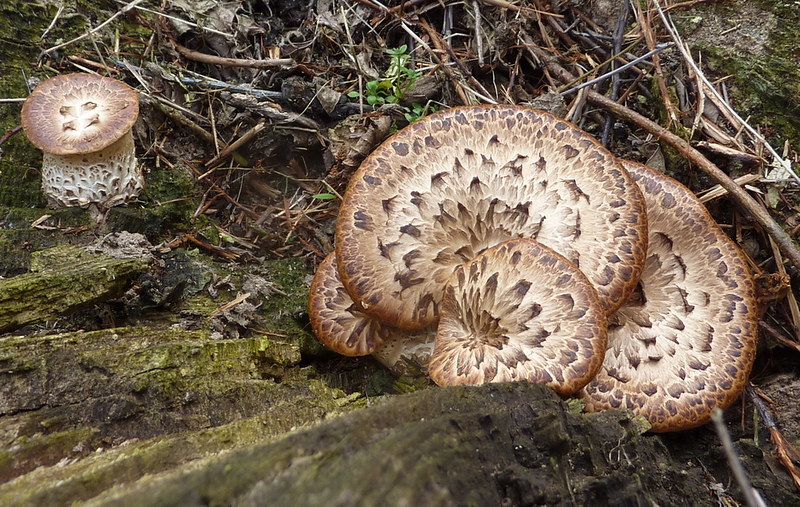Bracket fungi (basidiomycetes), also known as shelf or polypore fungi, can grow on both dead or living trees and cause widespread heartwood decay deep inside its host. These fungal bodies appear year-round depending on the species and produce bracket-shaped fruit on the trunk, roots or branches of the host tree that can span up to 70cm in diameter.
There are over 1,000 species of bracket fungi worldwide, and here you can explore a selection of bracket fungi found in Britain, detailing their identifying features, when and where they can be found.
Chicken of the Woods (Laetiporus sulphureus) – also known as Sulphur polypore’
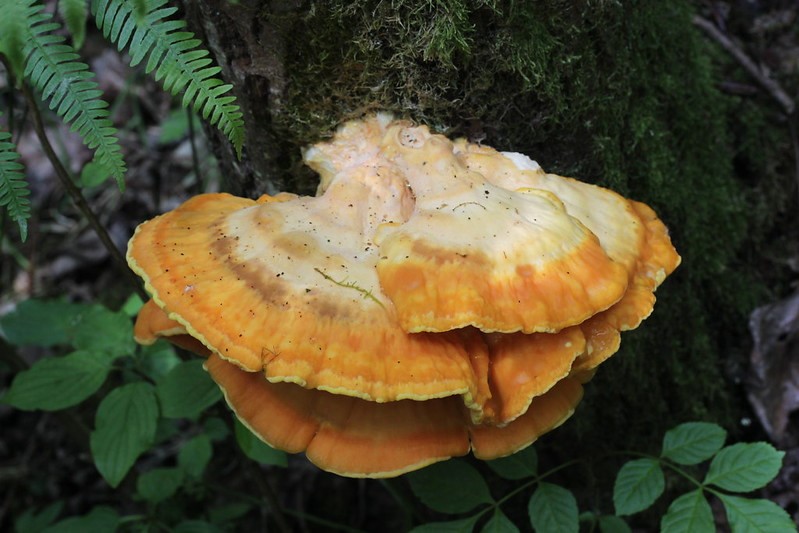
Identification: This easy to spot, sulphur-yellow fungus can grow up to 40cm in diameter and features numerous thick, soft, overlapping brackets. When young, they have a velvety texture and orange bands across yellow flesh, which fades to light cream with age. Each bracket is fan-shaped with an undulating margin, while the underside has small pores and produces a yellow liquid when squeezed.
Distribution: June to November. Mainly grows on oak tree trunks, but can also be found on Yew, cherry, chestnut and willows.
Size: 10-40cm
Hen-of-the-Woods (Grifola frondosa)
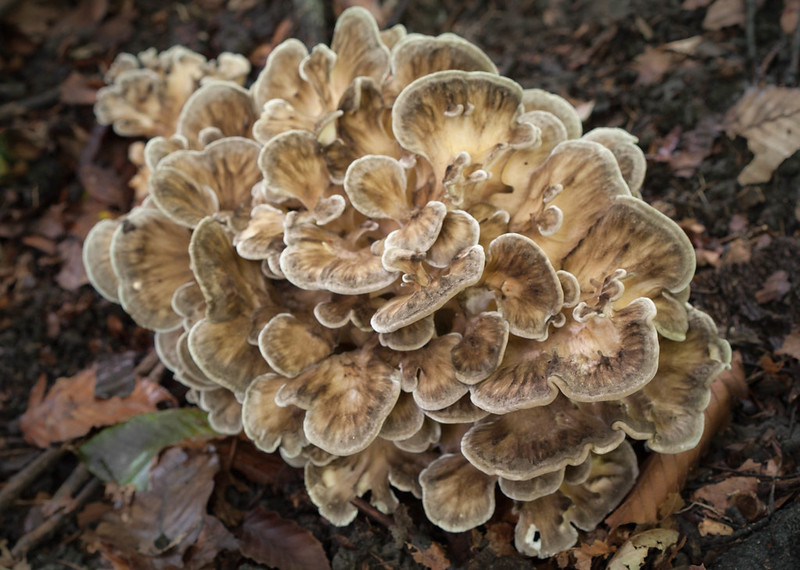
Identification: This large, very distinctive fungus features many flat, interlocking lobes growing from a dense centre attached to the foot of a tree. The underside of the fronds are cream in colour, their top side can vary from brown to grey, and the flesh is pale cream. It’s very common for multiple growths to emerge from one host, and fully grown hen-of-the-woods can weigh several kilograms.
Distribution: August to November. Predominantly around the base of mature oak trees but they do occasionally grow on other deciduous species.
Size: Up to 70cm
Turkeytail (Trametes versicolor)
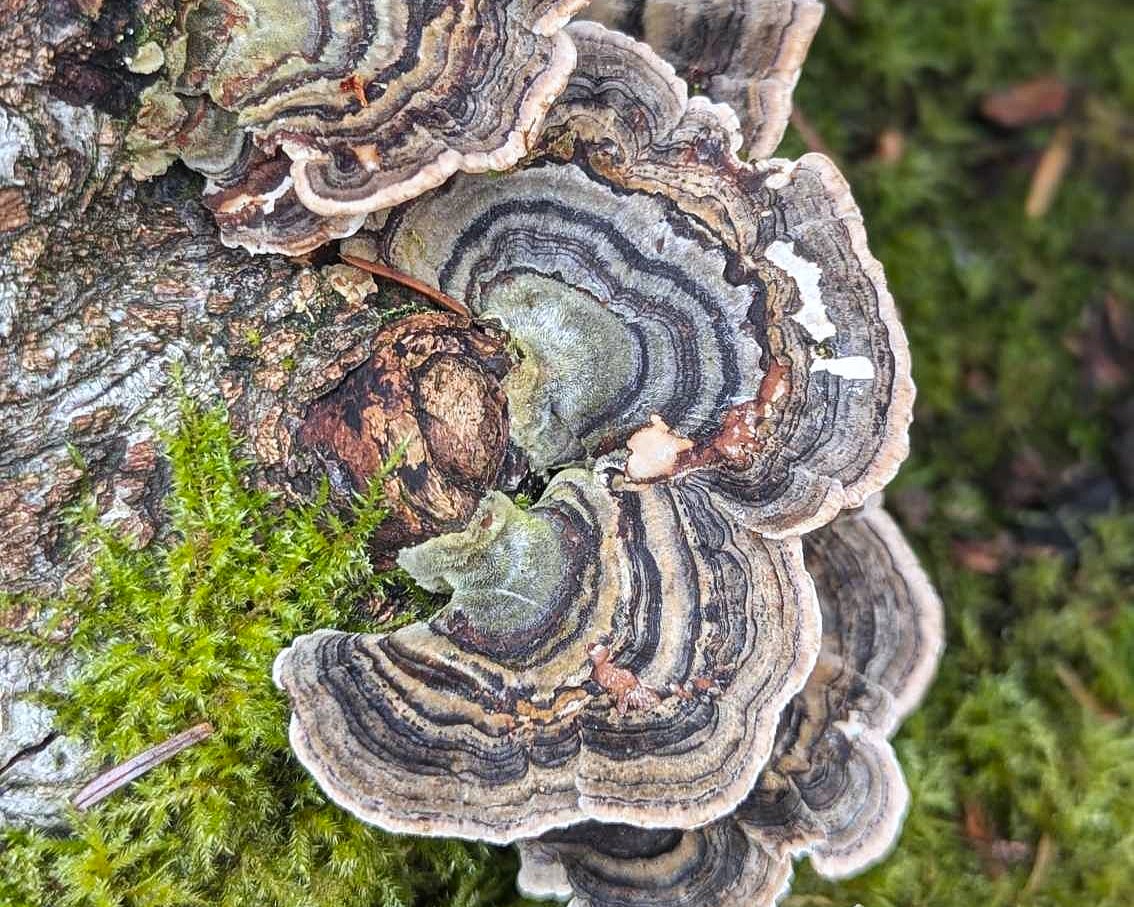
Identification: Turkeytail fungi produce thin but tough semi-circular caps in tight, overlapping tiers that have a slightly hairy, velvety texture. It has a range of concentrated coloured rings that are a mix of black, brown, grey, yellow, purple and green, however the outer ring along the edge of the bell is pale in colour. Often confused with Stereum ostrea (or False Turkeytail) this species can be correctly identified by its white underside featuring hundreds of visible pores.
Distribution: Can be found on fallen hardwood trees such as Beech or oak throughout the year, but is most abundant from late spring to autumn.
Size: 4-10cm
Beefsteak (Fistulina hepatica)
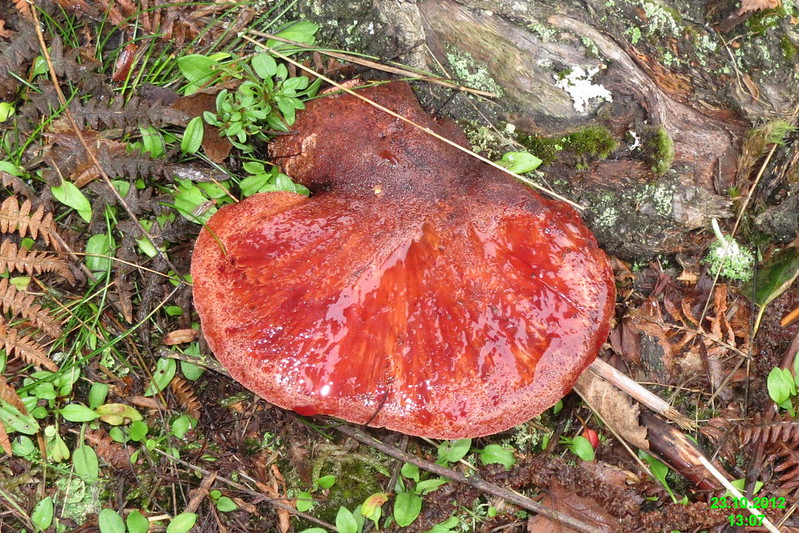
Identification: This bracket fungus can be pink, red or brown in colour, with a light underside full of pores that turn red with age. Featuring a slightly inflated edge that flattens as it matures, Beefsteak fungus is moist to the touch and produces smooth, round, pale pink spores.
Distribution: August to November. Usually found in broadleaved woodlands on oak trees.
Size: 6-25cm
Birch Polypore (Piptoporus betulinus) – Also known as the Razorstrop fungus
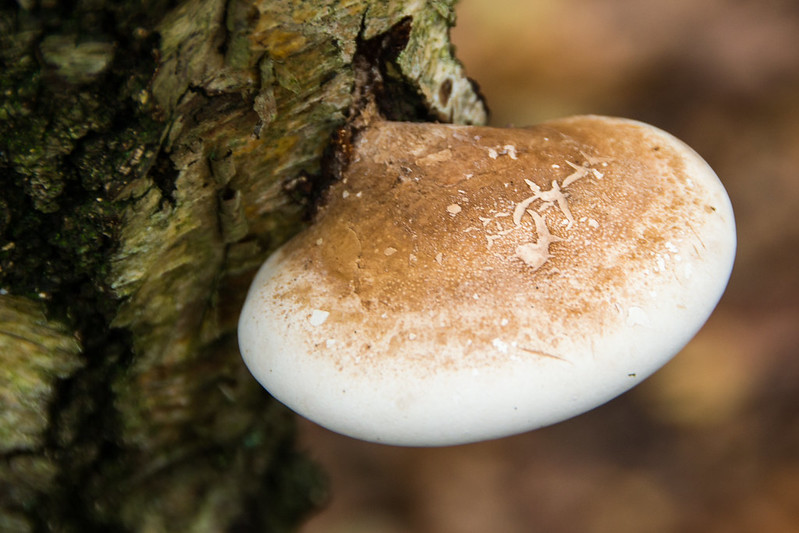
Identification: Birch Polypore is a common bracket fungus that grows exclusively on birch trees. It has a rounded, brown-white cap with a rubber or leather-like texture and white pores on its underside.
Distribution: It can be found year-round on the lower trunk of birch trees and fallen birch branches.
Size: 10-20cm
Dryads Saddle (Cerioporus squamosus)
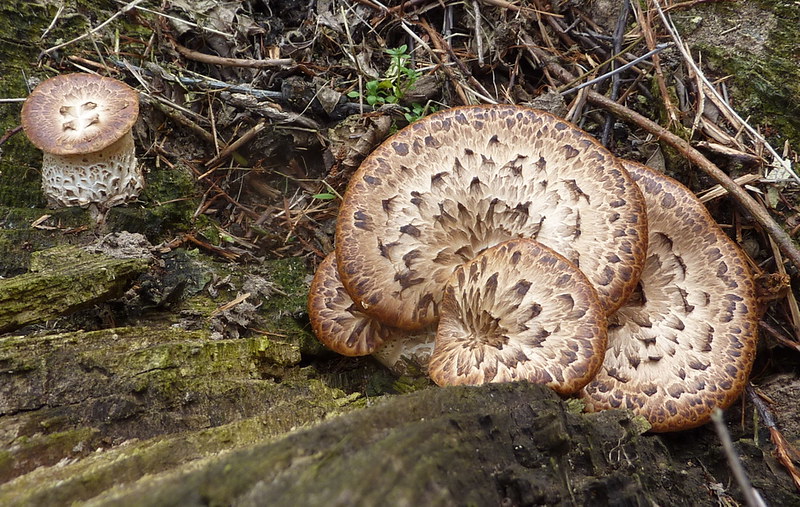
Identification: This species of fungi grows in overlapping tiers on dead or dying broad-leaved trees, particularly elm, Beech and Sycamore. Recognisable by their distinctly textured, creamy-ochre brackets, these fungiemerge at soil level at the base of the host tree or higher up the trunk. The underside of the fruit features hundreds of honeycomb-shaped pores.
Distribution: This fungus fruits in the summer and again in autumn, and is most commonly seen from April to September on deciduous trees and fallen wood on the forest floor.
Size: Up to 70cm
Southern Bracket (Ganoderma australe)
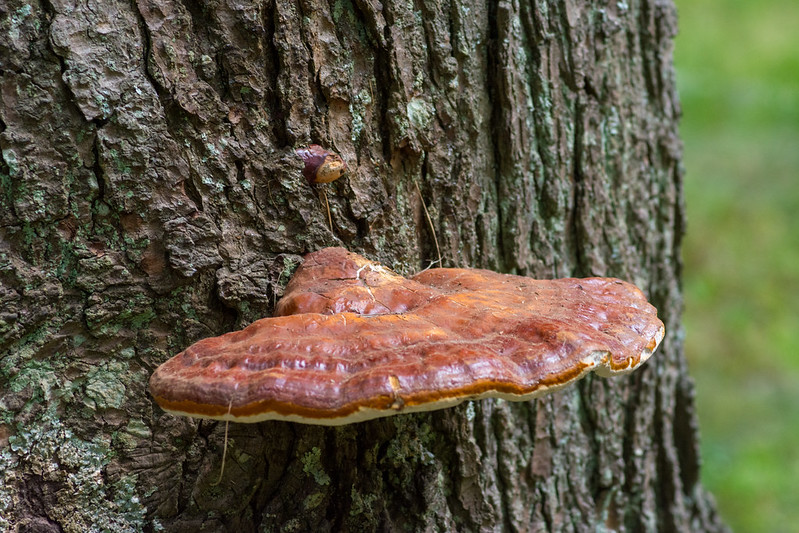
Identification: Southern Bracket fungi can grow on both living and dying deciduous trees and first appear in the form of solid, white balls. Over a number of years, these develop into large, thick brackets with a flat brownish top and a white underside. As the fungus ages, the smooth top can become ridged and bumpy, and when the underside is scored it produces dark brown marks. This fungus can be easily confused with the Artists Fungi (Ganoderma applanatum), however they can be distinguished by examining their spores under a microscope.
Distribution: This is the most common species of the Ganoderma genus and fruits on most deciduous trees from April to August.
Size: Up to 60cm
King Alfred’s Cakes (Daldinia concentrica)
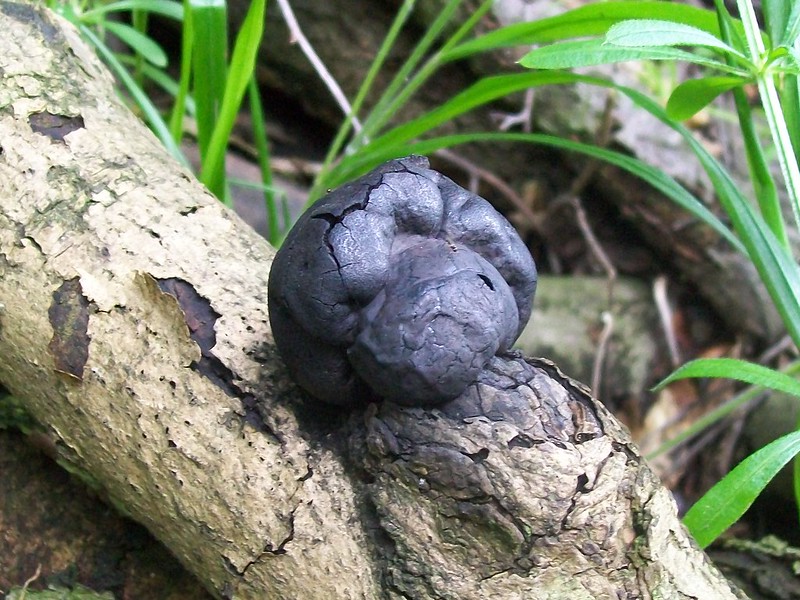
Identification: These fungi present themselves in the form of hard, round lumps roughly the size of a golf ball and are a matt, pinky-brown colour when young. As they mature, they darken to a coal colour and become shiny in appearance. The outer surface is solid but cracks easily, while the inside of the fruit is easily identified by black and grey concentric rings that are darker than the flesh. King Alfred’s Cakes are also known as coal fungus as they can be used as kindling or firelighters.
Distribution: Can be found year-round in deciduous woodland, especially on fallen Beech and Ash branches.
Size: 2-10cm
Horses Hoof (Fomes fomentarius)
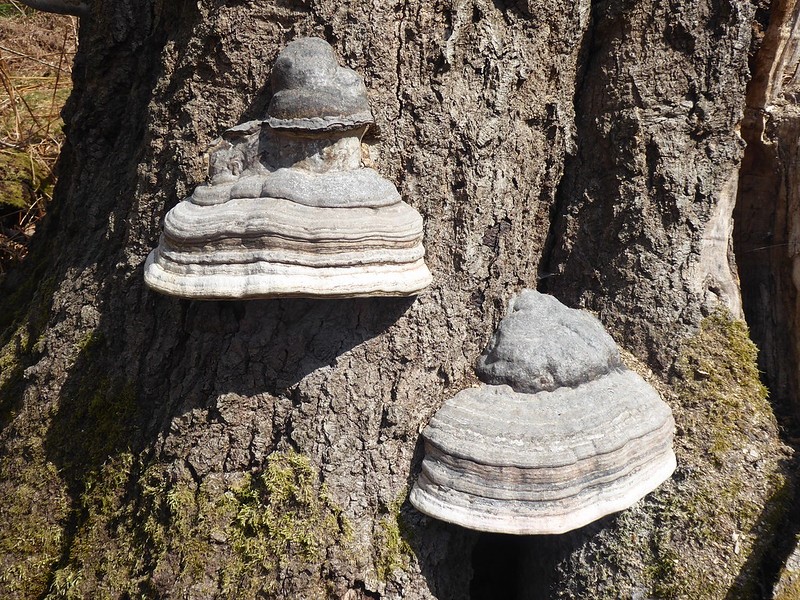
Identification: As evident from the name, this species of fungi is typically shaped like a horse’s hoof, with a pointed top and wide bottom. Featuring concentrated ridges across its exterior and with a fleshy, fibrous inside, their blunt, rounded margin is often cream or yellow. Although they can vary from silvery-grey to black in colour, most specimens are shades of brown. Small circular pores under the bell start off cream in colour and darken to brown once the fruit has matured. On occasion, some Horses Hoofs appear in more of a traditional, flat bracket shape.
Distribution: Can be found growing year-round on weak, living or dead hardwood deciduous trees, particularly Birch.
Size: 5 to 45cm

